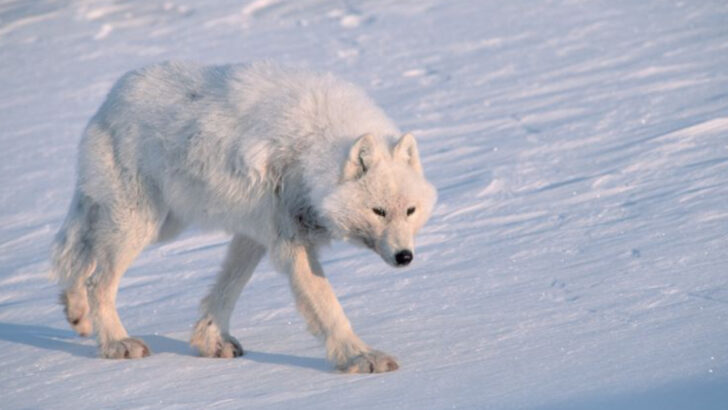Wolves have long captured our imagination, not just for their iconic howls but also for their impressive size and adaptability. Around the world, some wolf species stand out because of their sheer size, strength, and the unique environments they call home. These larger wolves often have fascinating stories tied to the landscapes they roam and the roles they play in their ecosystems.
Finding out where these big wolves live gives a glimpse into the diversity of habitats that support such powerful animals—from frozen tundras to dense forests. Understanding their range and behavior helps us appreciate the challenges they face and the importance of conserving their habitats. It’s a chance to get closer to some of the most remarkable wild canines on the planet.
Mackenzie Valley Wolf
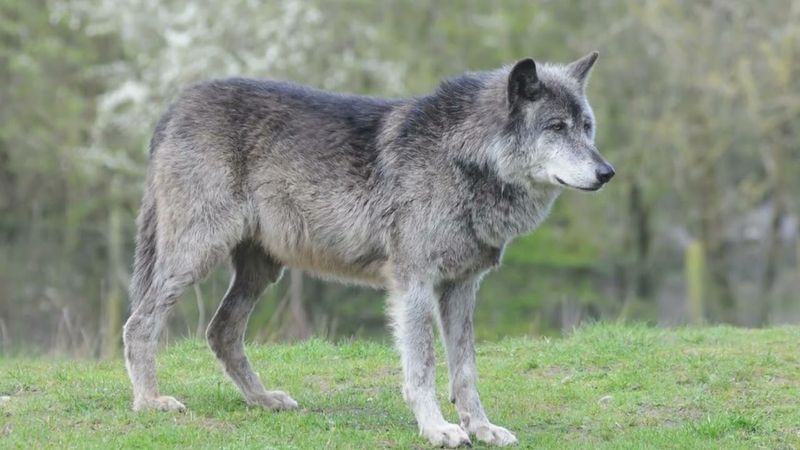
The Mackenzie Valley Wolf, also known as the Canadian Timber Wolf, is one of the largest wolf subspecies. Known for its robust build and thick fur, it inhabits the forests and tundra of Canada and Alaska. Its impressive size, with males weighing up to 175 pounds, makes it a formidable predator in its habitat.
In the wild, these wolves are known to hunt in packs, demonstrating remarkable teamwork and strategy to take down large prey like moose and caribou. The Mackenzie Valley Wolf’s adaptability to harsh climates is a testament to its resilience and survival skills.
British Columbian Wolf
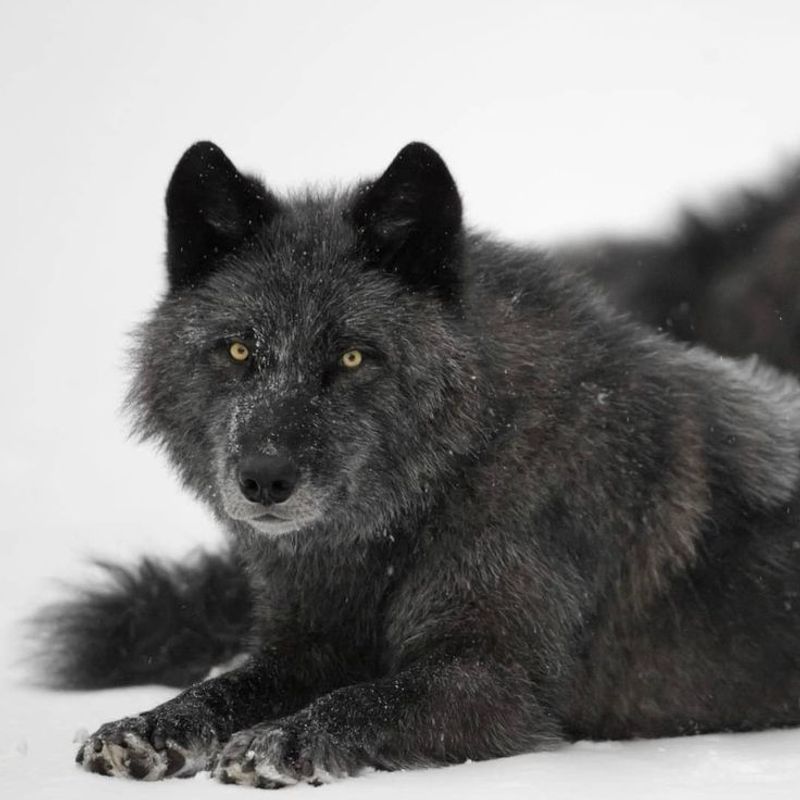
In the misty landscapes of British Columbia, the British Columbian Wolf stands as a symbol of the wild. This wolf is known for its dense, luxurious fur that shields it from the cold, and its sharp, intelligent eyes that seem to hold ancient wisdom.
The British Columbian Wolf’s adaptability to various terrains—from coastal regions to mountainous areas—illustrates its resilience. Often traveling in packs, these wolves are strategic hunters, relying on teamwork and communication.
Interestingly, they are integral to maintaining the balance of their ecosystem, influencing the population dynamics of prey species.
Eurasian Wolf
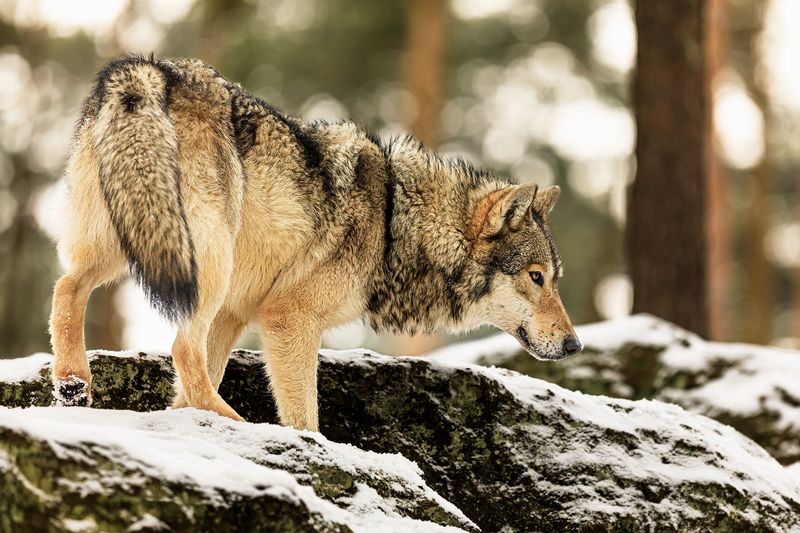
The Eurasian Wolf roams the forests, mountains, and steppes of Europe and Asia. Slightly smaller than its North American cousins, this wolf is known for its slender build and adaptability to various environments. Typically weighing between 70 to 130 pounds, the Eurasian Wolf is a skilled hunter.
These wolves are often seen in smaller packs, hunting medium-sized mammals like deer and wild boar. They are known for their distinctive howls that echo through the wilderness, a hauntingly beautiful reminder of their presence. Their ability to thrive in diverse habitats speaks to their evolutionary success.
Mongolian Wolf
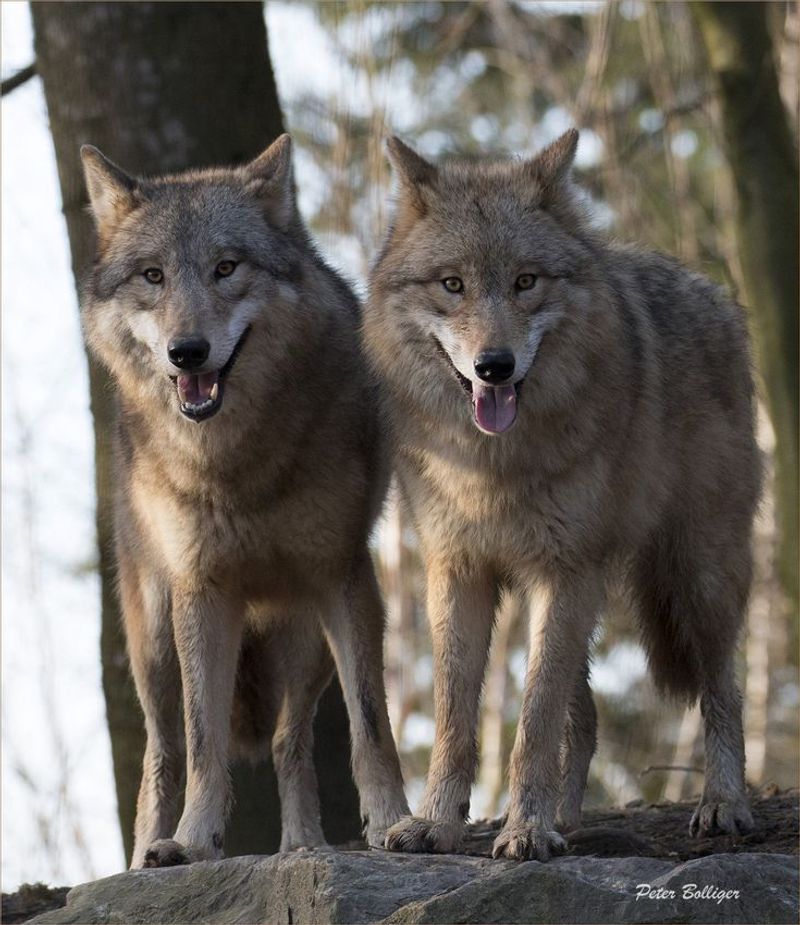
The Mongolian Wolf, native to the endless steppes of Mongolia, captures the imagination with its robust stature and agile movements. Its ability to traverse vast distances in search of food is a testament to its endurance.
These wolves are uniquely adapted to the open plains, using their keen senses to detect prey. Social creatures, Mongolian Wolves communicate through a series of vocalizations and body language, strengthening pack bonds.
A lesser-known fact is their role in local folklore, where they are often portrayed as cunning and wise, embodying the spirit of the wild.
Arctic Wolf
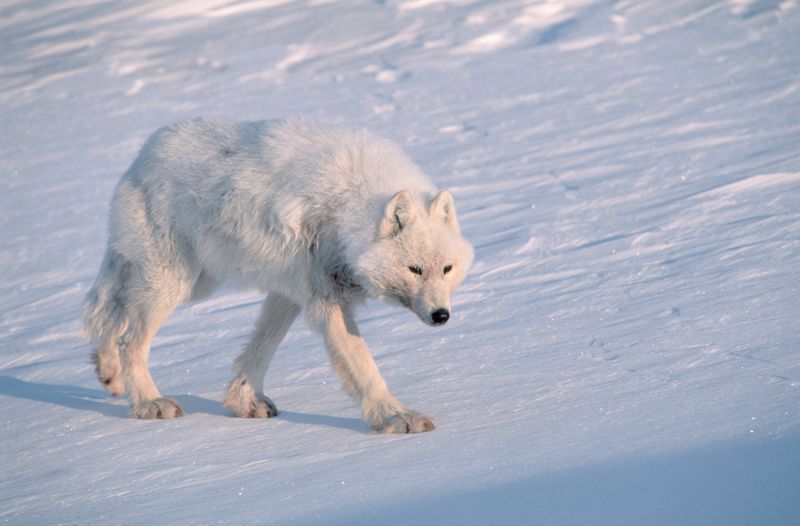
The Arctic Wolf is a magnificent creature adapted to the frigid temperatures of the Arctic regions of North America and Greenland. Its pure white coat provides camouflage in the snow, while its smaller size compared to other wolves helps retain body heat.
Typically weighing between 70 to 125 pounds, Arctic Wolves are known for their nomadic lifestyle, often covering vast distances in search of food. They primarily feed on Arctic hares and muskoxen, utilizing their stealth and teamwork to survive in such a harsh climate. Their resilience in one of the planet’s most unforgiving environments is truly remarkable.
Northwestern Wolf
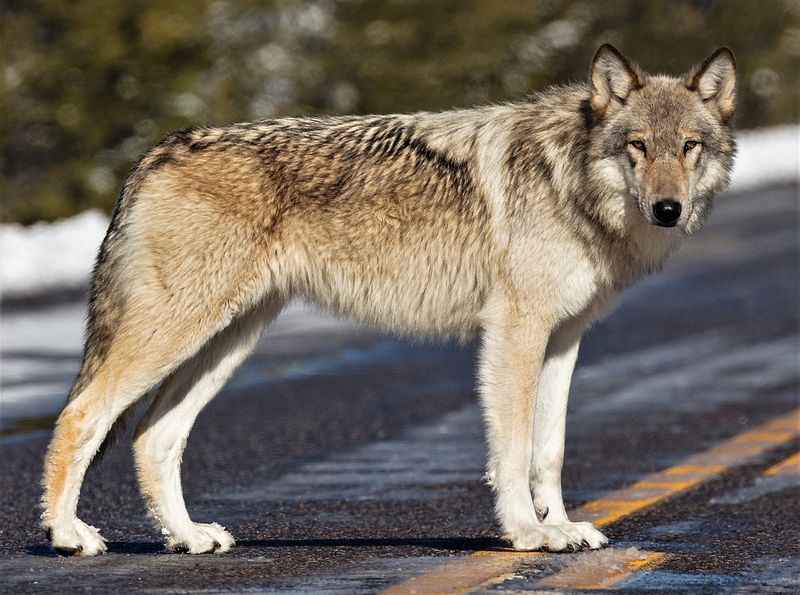
The Northwestern Wolf, a subspecies of the Gray Wolf, is found in the coastal areas of Alaska and British Columbia. Known for its large size, males can weigh up to 150 pounds. With thick gray fur and powerful limbs, these wolves are well-suited for the rugged terrain they inhabit.
Their diet primarily consists of salmon, deer, and elk, which they hunt with precision and strength. The Northwestern Wolf’s social structure and pack dynamics are fascinating, often led by an alpha pair that guides the pack’s hunting and territorial activities. Their presence is vital to the ecological balance of their habitat.
Tundra Wolf
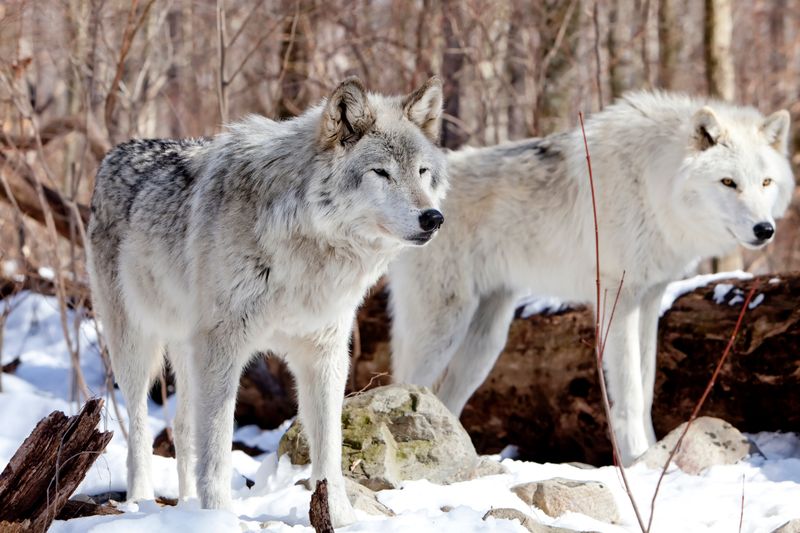
The Tundra Wolf, native to the northern tundra and forest-tundra zones of Russia, is adapted to cold environments. With a light-colored coat that blends into the snowy landscape, this wolf is known for its long legs that aid in traversing deep snow.
Weighing up to 125 pounds, Tundra Wolves hunt in packs, preying on reindeer and small mammals. Their ability to endure extreme cold and scarcity of food highlights their adaptability. The Tundra Wolf plays a crucial role in its ecosystem, maintaining the balance by controlling prey populations. Its presence in the wild is a marker of true wilderness.
Honshu Wolf
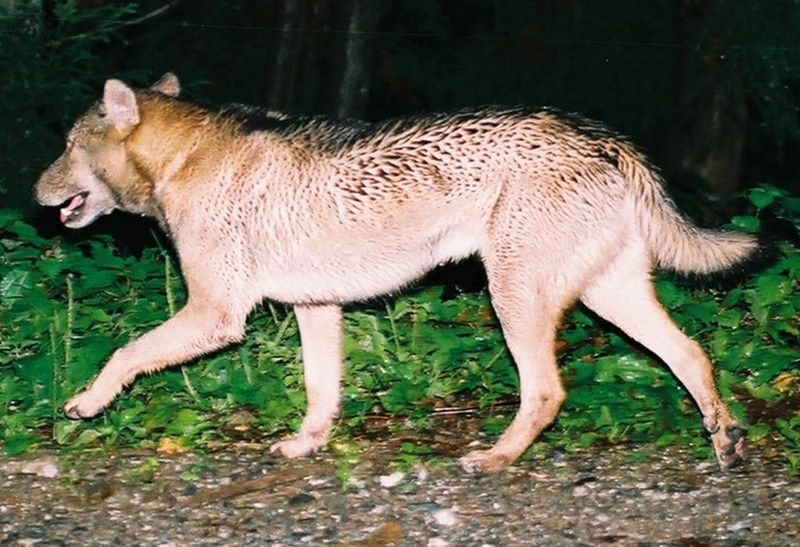
The Honshu Wolf was a smaller, now-extinct wolf species once found in the Japanese islands of Honshu and Shikoku. Known for its smaller stature, it was adapted to the mountainous forests of Japan. Though it reached only about 20 inches at the shoulder, the Honshu Wolf was an agile hunter.
Living in close proximity to human settlements, it was revered and feared in local folklore. The last confirmed sighting was in 1905, highlighting the impact of habitat loss and human encroachment. Although extinct, the Honshu Wolf remains a fascinating subject for those interested in wildlife and conservation history.
Red Wolf

The Red Wolf is a critically endangered species native to the southeastern United States. With its distinctive reddish-brown fur and long legs, it stands out from other wolves. Weighing between 45 to 80 pounds, the Red Wolf occupies a unique niche in its habitat.
Efforts to conserve the Red Wolf have been ongoing, with captive breeding and reintroduction programs playing key roles. These wolves are known for their shy nature and tend to avoid human contact. Their survival is precarious, heavily dependent on continued conservation efforts to protect their dwindling numbers and preserve their natural habitat.
Indian Wolf
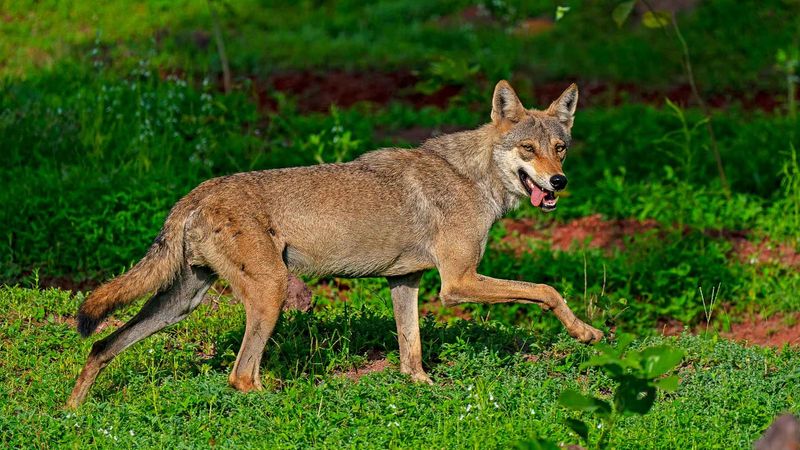
The Indian Wolf, found in the semi-arid regions of India and Pakistan, is smaller and leaner than its northern relatives. Weighing between 40 to 60 pounds, it is characterized by its reddish-gray fur and pointed ears.
These wolves primarily hunt small to medium-sized mammals like rodents, hares, and birds. Known for their cunning hunting strategies, Indian Wolves often hunt in pairs rather than large packs. Despite facing threats from habitat loss, they are known to adapt well to changing environments, finding innovative ways to coexist with humans in increasingly fragmented landscapes.
Dhole
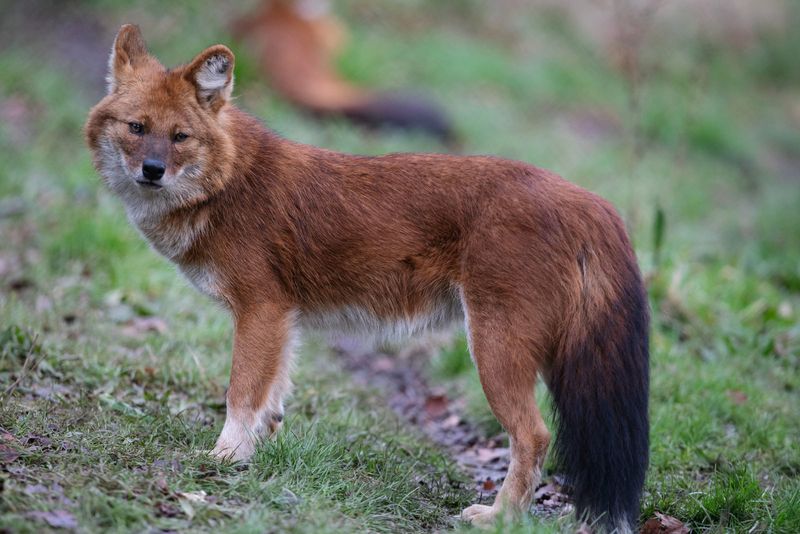
The Dhole, or Asiatic Wild Dog, is a unique canid native to Asia, resembling wolves in several aspects. With rust-colored fur and bushy tails, Dholes are excellent hunters with a pack-oriented lifestyle. Weighing between 30 to 45 pounds, they are smaller than other wolves but no less effective.
These pack hunters are known for their complex vocalizations and cooperative hunting techniques, often taking down prey much larger than themselves. They inhabit dense forests, grasslands, and mountainous regions, adapting well to various environments. Protecting their habitats is crucial for their survival, as they remain endangered due to habitat loss and competition.
Maned Wolf
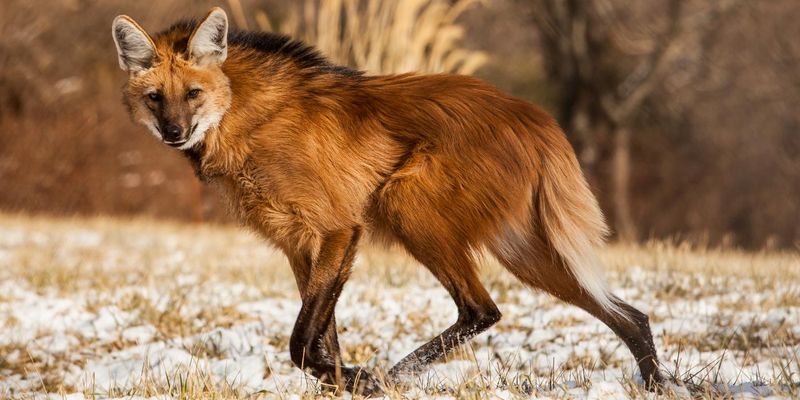
The Maned Wolf is a striking canid native to the grasslands and savannas of South America. Known for its tall, slender build, it stands out with long legs and a distinctive black mane. Weighing between 44 to 55 pounds, the Maned Wolf has a unique appearance reminiscent of a fox.
Unlike other wolves, it is a solitary creature, primarily hunting small mammals, birds, and insects. Its long legs aid in seeing over tall grasses, making it an adept hunter in its environment. The Maned Wolf’s survival is closely tied to the preservation of its natural habitat, which faces threats from agriculture expansion.
Ethiopian Wolf
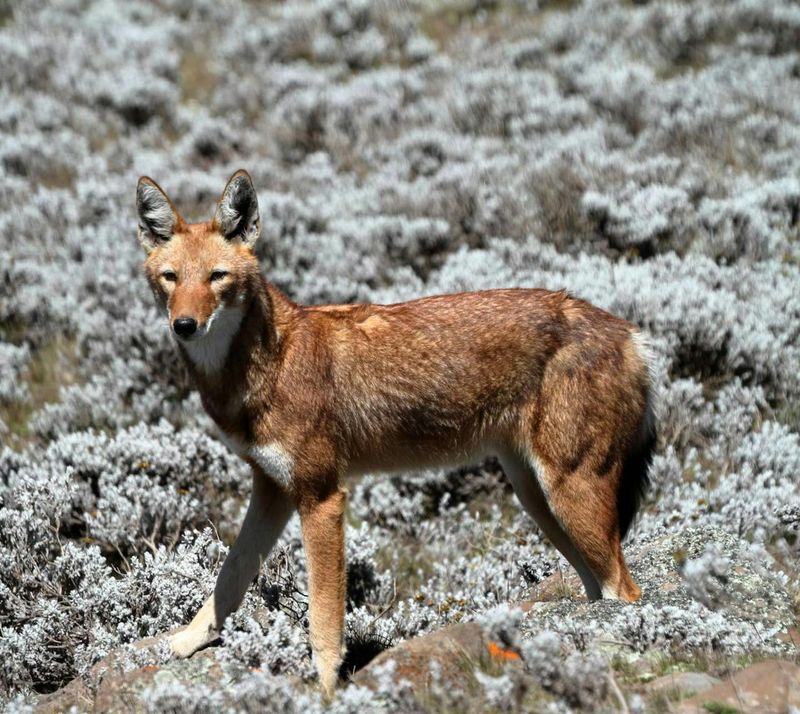
The Ethiopian Wolf is Africa’s rarest and most endangered canid, found in the highlands of Ethiopia. With its reddish coat and narrow face, it resembles more a jackal than a traditional wolf. Weighing around 24 to 42 pounds, it is a specialized hunter of rodents.
Living in family units, these wolves exhibit a highly social structure, often seen hunting during the day. The Ethiopian Wolf’s survival is critically dependent on conservation efforts, as its habitat is increasingly threatened by human activities. Protecting these wolves is vital for maintaining the ecological balance of their high-altitude environment.
Mexican Wolf
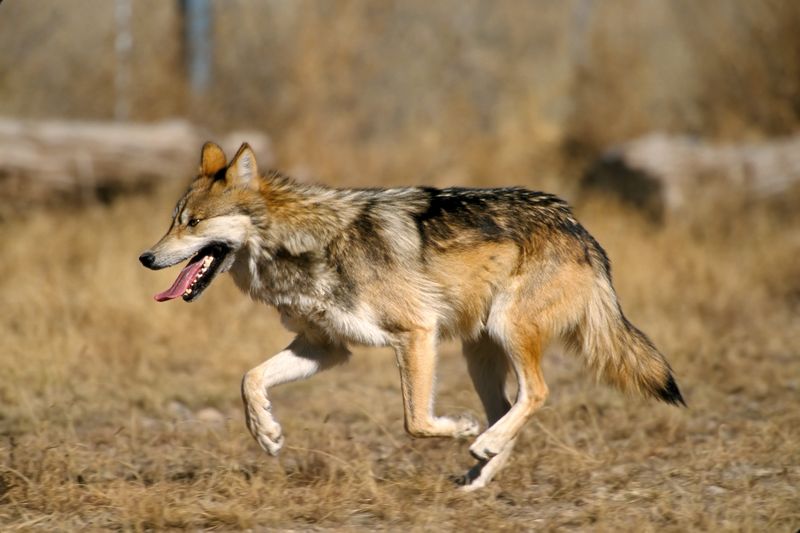
The Mexican Wolf, the smallest subspecies of the Gray Wolf, is native to the mountainous terrain of the southwestern United States and Mexico. Weighing between 50 to 80 pounds, it features a mix of gray and brown fur that provides excellent camouflage.
Once on the brink of extinction, intensive conservation efforts have helped its population to slowly recover. Mexican Wolves primarily hunt elk and deer, relying on their agile bodies and pack strategies. Their presence is essential for the ecological integrity of their habitat, and continued protection efforts remain crucial to their survival and the health of their ecosystem.
Great Plains Wolf
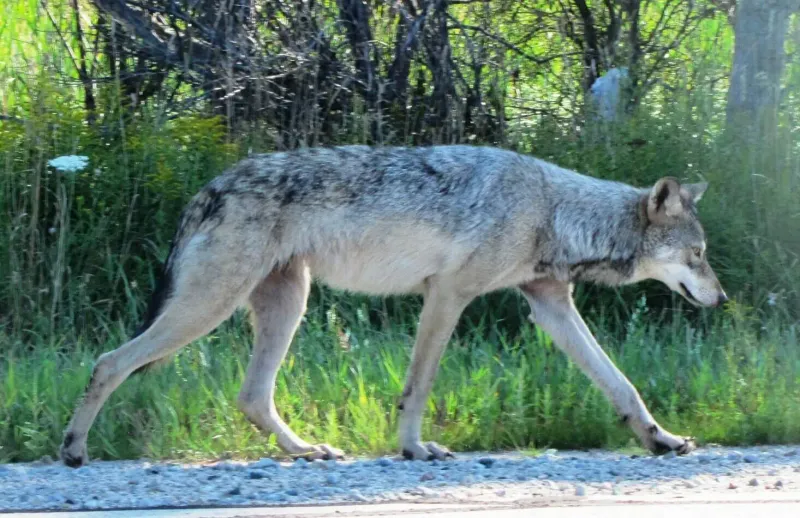
The Great Plains Wolf, also known as the Buffalo Wolf, once roamed extensively across North America’s plains. With a robust build and mixed fur of gray and tan, these wolves were known to weigh up to 110 pounds. They played a vital role in their ecosystem, preying primarily on bison, deer, and elk.
Hunting in large packs, they demonstrated remarkable coordination and intelligence. Despite their historical abundance, habitat loss and hunting drastically reduced their numbers. Recent reintroduction efforts focus on restoring their populations and reviving the ecological balance of the Great Plains.
Arabian Wolf
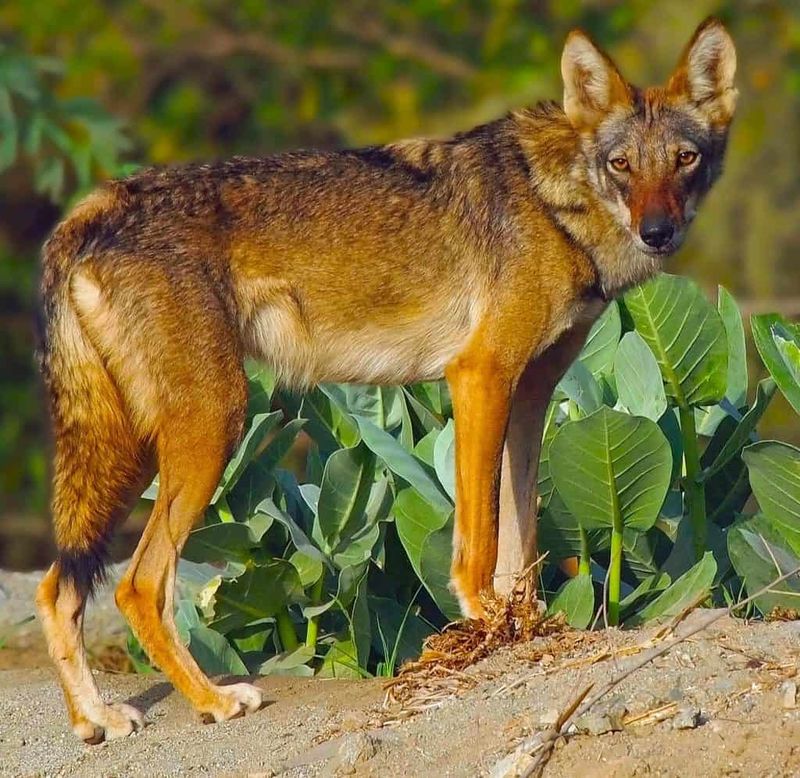
The Arabian Wolf, native to the deserts of the Arabian Peninsula, is a subspecies adapted to arid environments. Weighing between 40 to 55 pounds, it is smaller and leaner, with sandy-colored fur that provides camouflage in the desert.
These wolves are opportunistic feeders, adapting their diet to available resources, including carrion and small to medium-sized mammals. Solitary or in small packs, they have developed strategies to survive the harsh desert climate. Conservation efforts are crucial to protect their dwindling numbers, as they face threats from habitat destruction and human conflict in their range.
Italian Wolf
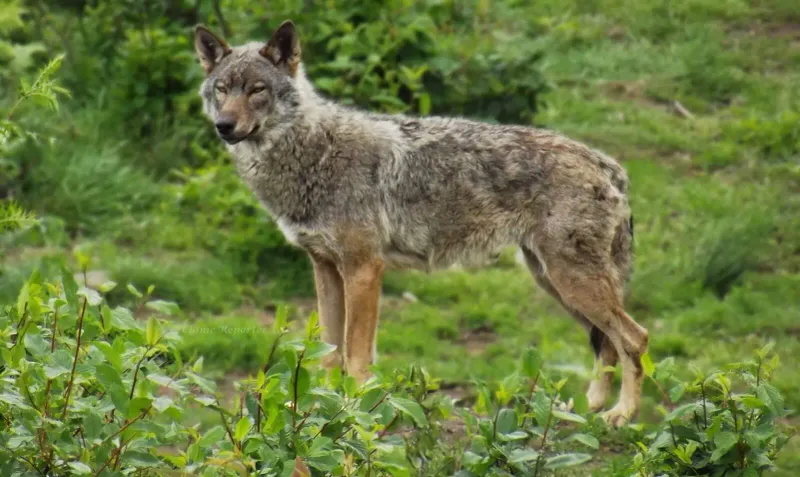
The Italian Wolf, a subspecies of the Gray Wolf, inhabits the Apennine Mountains and the western Alps of Italy. With a slender build and a mix of gray and brown fur, it weighs between 55 to 88 pounds. Known for its adaptability, the Italian Wolf thrives in diverse environments, from forests to mountainous regions.
These wolves primarily hunt wild boar, deer, and small mammals. Their presence is vital for maintaining the ecological balance, controlling prey populations. Conservation initiatives have been instrumental in stabilizing their populations, ensuring that they continue to roam the Italian wilderness.
Himalayan Wolf

The Himalayan Wolf, found in the high-altitude regions of the Himalayas, is adapted to cold, snowy environments. With a thick coat and robust build, it weighs between 77 to 88 pounds. These wolves are known for their unique vocalizations, often heard echoing through the mountains.
Their diet primarily consists of sheep, goats, and other mountain mammals. Living in small packs, they demonstrate strong social bonds and effective hunting strategies. Conservation efforts are critical, as these wolves face threats from habitat encroachment and conflict with local herders. Protecting their habitat is essential for their survival.
Alaskan Interior Wolf
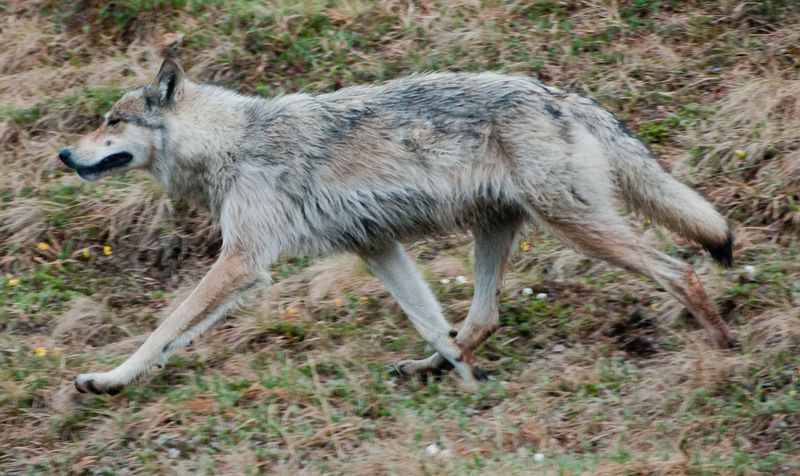
The Alaskan Interior Wolf is a formidable predator inhabiting the vast forests and tundras of Alaska. Known for its thick, dark fur and powerful limbs, it weighs between 85 to 115 pounds. These wolves are highly adaptable, thriving in extreme cold and varying terrains.
Their diet includes deer, moose, and caribou, which they hunt in coordinated packs. The Alaskan Interior Wolf plays a critical role in maintaining the ecological balance by regulating prey populations. Their survival is closely linked to habitat preservation and responsible wildlife management practices in the region.
Iberian Wolf
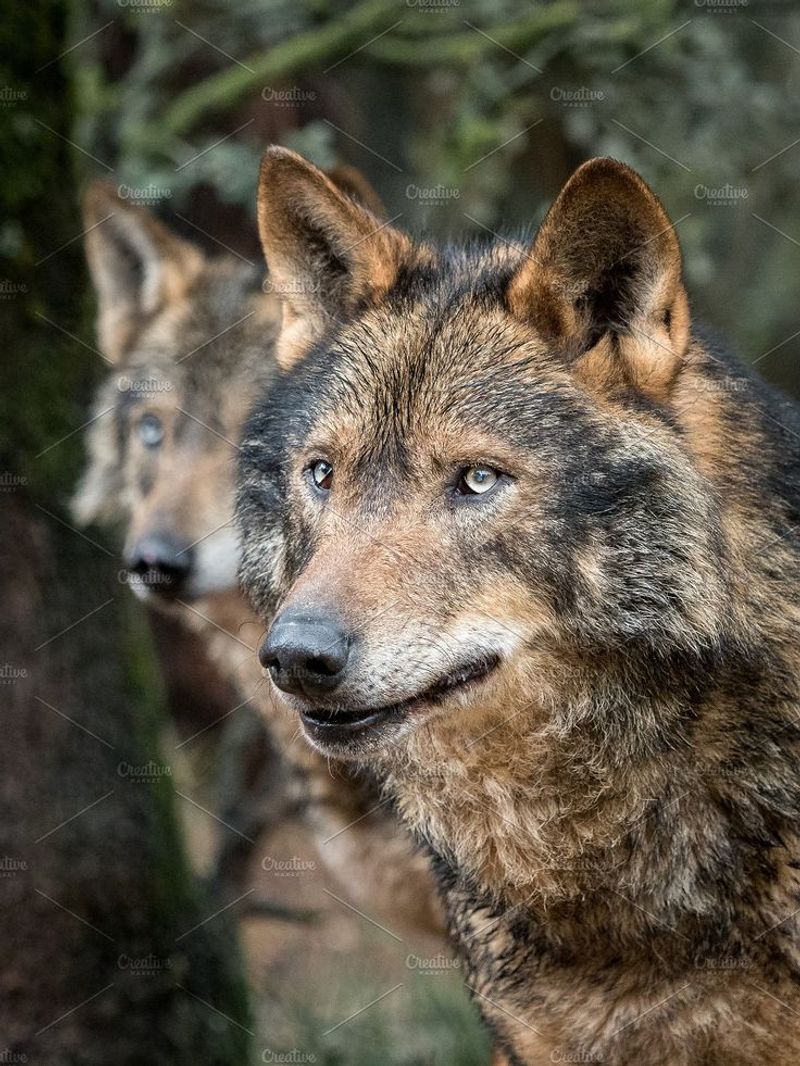
The Iberian Wolf, with its striking amber eyes, roams the rugged landscapes of the Iberian Peninsula. Known for its distinctive white markings on the upper lips and dark fur along its back, this wolf embodies stealth and grace. These wolves prefer the deep forests and mountainous regions, where they play a crucial role in maintaining ecological balance.
Interestingly, the Iberian Wolf is often seen as a symbol of mystery and resilience, having survived centuries of challenges. Conservation efforts continue to focus on ensuring their survival amidst changing landscapes and human encroachment. Their haunting howls echo through the valleys, a reminder of their enduring presence in the wild.
Did you know? The Iberian Wolf has adapted to various environments, ranging from dense forests to open fields, showcasing its incredible adaptability.

